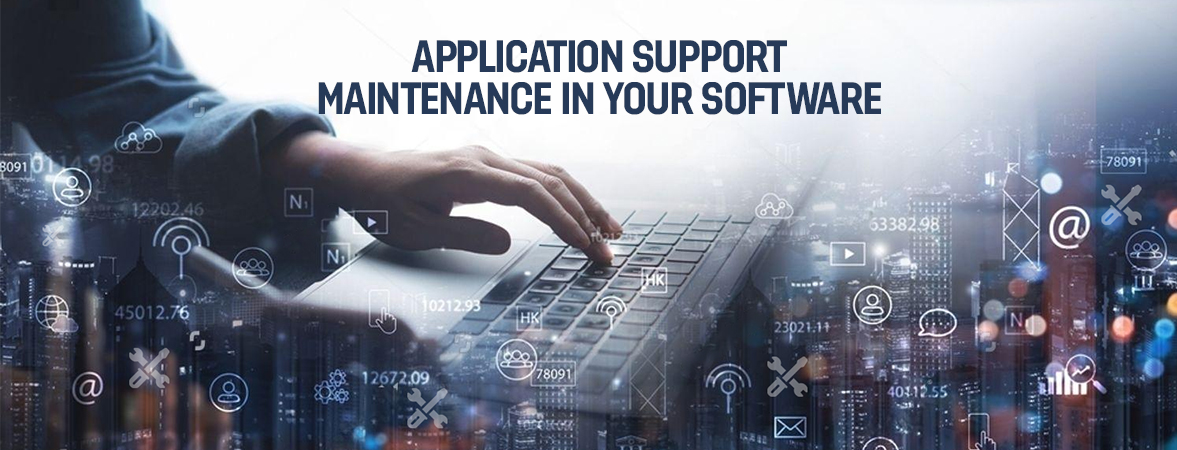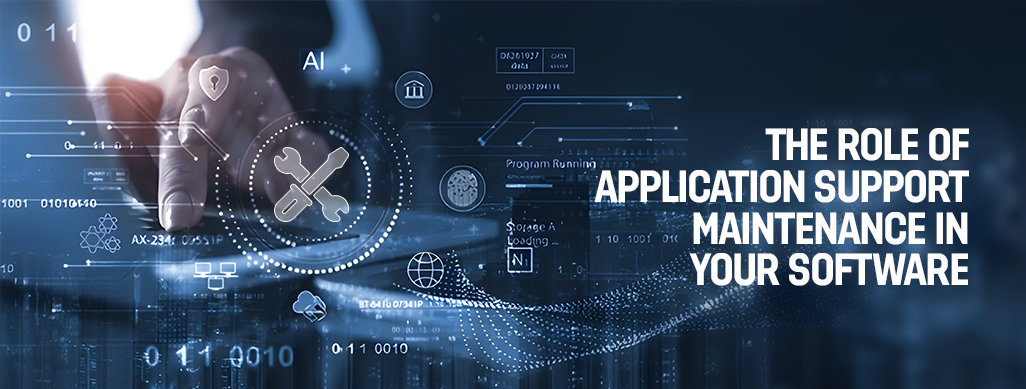
We use cookies to ensure that we give you the best experience on our website.
By using this site, you agree to our use of cookies. Find out more.
Application support maintenance should be viewed as a vital ongoing process rather than a one-time activity.

Application support maintenance are critical yet often underappreciated aspects of maximizing the value of software over the long term. While initial development tends to receive significant focus, ensuring applications continue serving organizational needs requires dedicated resources as business and technical environments evolve. This blog explores the key role that application support maintenance plays in extracting full value from technology investments. It discusses how maintenance helps software function properly, adapt to changing requirements, bolster security, and reduce costs of ownership. Whether you leverage commercial or custom-built solutions, applying rigorous support practices is essential to optimize performance and avoid disruption as contexts shift.
Application support maintenance involves a range of activities focused on keeping software functioning effectively over time after initial development and deployment. It includes regularly evaluating applications for bugs, errors or security vulnerabilities and resolving any issues through patches or hotfixes.
Support and maintenance also aim to improve performance, incorporate new features to align with changing business needs, and modernize interfaces to optimize the user experience. This work is usually handled by a dedicated team that tracks releases and known issues. They work to minimize interruptions from unsupported software versions. Vendors also offer paid maintenance agreements which entitle users to regular updates and professional support. Whether performed in-house or outsourced, application maintenance is an ongoing process that helps maximize the value of existing technology investments and reduces long-term costs of ownership.

Application support maintenance serves several important roles that help ensure software continues meeting organizational needs over time. It allows for ongoing improvements and the incorporation of new features. Support and maintenance aid in fixing bugs, enhancing capabilities, and adapting applications as technologies and business processes change. Regular maintenance is essential for software to remain effective.
One of the primary roles of application support maintenance is to help ensure that software continues functioning as intended over the long run. Without ongoing maintenance, flaws or bugs in the code could cause programs to experience crashes, errors, or other glitches that disrupt normal operation. Support teams work to identify and address any issues that crop up so the software remains stable and reliable. They monitor for defects, conflicts, or incompatibilities and rollout patches or updates to resolve such problems. Regular maintenance through testing and debugging helps software avoid performance deteriorations that come from things like hardware changes, platform upgrades, or interactions with other programs over time.
Keeping software operating smoothly also involves maintaining compatibility with other applications and systems as they evolve. Changes to web browsers, operating systems, databases, or other dependencies could introduce incompatibilities if not addressed. Support maintenance evaluates interface requirements and delivers modifications to accommodate shifts in technical infrastructure. It works to ensure data can be seamlessly accessed and utilized across updates. This continuity of proper functioning is important for organizations relying on software for daily workflows, data storage, or other operational needs. Users expect programs to just work as intended without disruption.
In addition to ensuring stable functionality, maintenance is crucial for enabling software to evolve along with shifting organizational needs. Business priorities, processes, regulations and markets are constantly in flux. Without the ability to incorporate new requirements or enhance existing capabilities, software can quickly become outdated or inadequate. Support teams use maintenance as an opportunity to tweak and expand programs based on updated strategic goals or operational requirements. They add new functionality, optimize existing features, and tailor interfaces to align with transitions in how the business operates. This helps maximize continued value from investments in software over the long term.
The technology landscape is also rapidly transforming. Cloud platforms, mobile adoption, data analytics capabilities, and other emerging innovations continually change how organizations function. Through maintenance, needed variations can be integrated into software to maintain strategic alignment with technological disruption. Features may be augmented to take advantage of new infrastructure like APIs, leverage updated programming language capabilities, or interface with novel data sources. Support maintenance accommodates shifts in the IT ecosystem so software investments aren�t jeopardized by an inability to transform. It ensures solutions remain cutting edge and fit for purpose as technical realities progress.
One area where ongoing maintenance is critically important is security. As threats evolve using new techniques, it is essential for software to be upgraded to address vulnerabilities. Without regular security patches and updates, applications can quickly become out of date and exposed. A proactive support program evaluates software for potential weaknesses and promptly implements fixes. It incorporates the latest encryption standards and authentication methods. Further, compliance with regulatory guidelines like GDPR necessitates continuous assessment and enhancement. Support maintenance helps verify protocols are compliant and mediated as laws and policies change over time.
Beyond responding reactively to issues, maintenance takes a preventative approach. Things like access controls, input validation, and privilege segregation are refined to close any security loopholes before they can be exploited. Processes are put in place to rapidly and efficiently address any subsequent problems or compliance gaps. Penetration testing and third-party security audits are also part of an ongoing assurance program through maintenance. Metadata classification and storage guidelines are tightened accordingly. This helps SOFTWARE maintain certifications and build user trust in its data protection measures. A high security posture creates competitive advantage while avoiding potentially expensive penalties and brand damage.
Support and maintenance play a key role in lowering the total cost of owning software over the long run. Without ongoing improvements and fixes, technical issues and failures can result in costly downtime, lost productivity, and damaged stakeholder satisfaction. Regular maintenance through minor updates avoids major overhaul expenses down the road that may be needed to resolve accumulation systemic problems. It also helps prevent replacing applications entirely before the end of their usable lifecycles. Fewer disruptions mean less unbudgeted incident recovery fees. Additionally, support teams identify performance inefficiencies that could be optimized to reduce hardware expenditures or license consumption over time.
Rolling out new features to match changing needs avoids more pricey redevelopment costs later. Maintenance ensures continued ROI from existing technology investments. It allows leveraging software investments for longer rather than prematurely retiring platforms early due to lack of flexibility. Vendor maintenance contracts are often more affordable than custom development bills. Outsourcing maintenance to experts further reduces requiring growing in-house teams. Their extensive testing helps identify bottlenecks to optimize. QA practices catch defects early, lowering rework expenses. Overall, proactive maintenance through scheduled upgrades and enhancements is more cost-efficient than extensive reactive repairs.
Application support maintenance services should be viewed as a vital ongoing process rather than a one-time activity. It helps keep software operating smoothly even as dependencies and regulations transform radically. A structured maintenance program can spot weaknesses proactively and roll out patches seamlessly. It incorporates user feedback to continuously enhance usability and features. Outsourcing application support to experienced partners can reduce costs and guarantee access to expertise. Overall, conscientious maintenance extends the useful lifespan of software, prevents costly surprises, and ensures solutions remain fit for evolving purposes. Prioritizing support is key to extracting full value from technology investments over the long term.
Leave a Comment
Your email address will not be published.